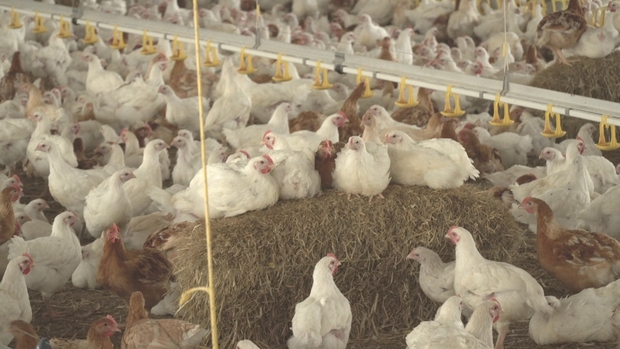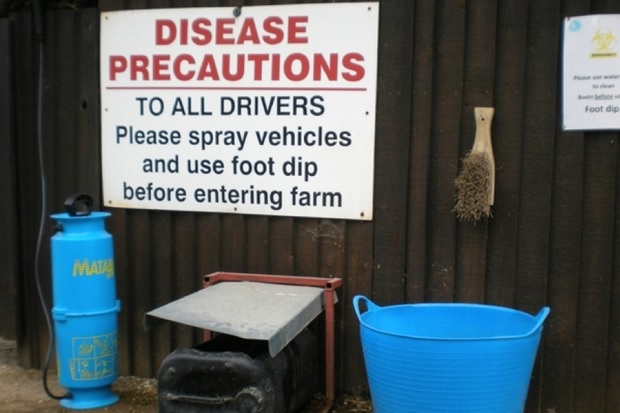
The work of our team and the research we conduct here at APHA has a direct impact on reducing the risk that a potentially dangerous type of Salmonella will enter the food chain. Not only do we have an immediate, ‘coal-face’ impact, by helping individual farmers get rid of Salmonella and reducing the risk of spread of infection, but we also use this information to inform research and give advice to the whole industry. I feel lucky to be part of a team that does such dynamic, interesting and important work – and it makes tucking in to that roast chicken on a Sunday all the more satisfying!
The Salmonella National Control Program (NCP) has been in place since 2009 to ensure effective surveillance of the UK’s broiler industry for so-called ‘regulated’ types of Salmonella i.e those that are considered to be an important public health risk. Every so often an email comes through alerting us to a positive routine sample from the NCP. For this hypothetical example, let’s say the sample is positive for ‘Salmonella Typhimurium’, a regulated type which very occasionally gets into broiler flocks and could cause illness in people if contaminated meat enters the food chain.
Action stations
It is APHA’s job to investigate the infected farm as although the birds are culled (so they do not enter the food chain) the farm itself may still be contaminated even after being cleaned and disinfected by the farmer, which could infect the next flock of chickens. This takes the form of an advisory visit under the Zoonoses Order (1989) by APHA field staff and a sampling protocol is followed early in the next flock to determine if Salmonella is still present.
Special swabs are placed over protective boots and walked all over the inside of the previously infected poultry shed to get a representative sample. A veterinary advisory visit is also carried out at the same time to try to determine the source of infection and identify any risk factors which need to be dealt with to prevent continuation of the problem. The ‘boot-swabs’ are cultured back at the lab to look for growth of Salmonella. The birds will be allowed to go to slaughter as normal, but if the flock is still positive, it will again have to be culled on the farm and official sampling has to be carried out on the disinfected house before it is allowed to be restocked.

This deals with the immediate issue but from a research perspective, we in the Field Epidemiology and Surveillance team are interested in delving deeper to provide further knowledge on how to control Salmonella.
Send in the researchers
Our aim is to determine the effectiveness of the post-infection disinfection procedure on the farm but despite best efforts, occasionally reinfection can occur and further infected flocks could emerge from the same poultry farm over time.
Farms that have recently had a positive sample for a regulated Salmonella may be selected for an ‘unofficial’ follow-up visit for research purposes, with the farmer and their vet’s agreement and the sampling procedure is more detailed. Occasionally, we still find Salmonella on the farm hiding in cracks, recesses or the wider environment immediately outside the poultry sheds. We also investigate selected cases of non-regulated serovars, which can be more difficult to clear from poultry farms.
So why are some farms better at preventing incursion and re-emergence of Salmonella than others? What are the main risk factors? What measures are actively protective against Salmonella rearing its ugly ahead once again? Or whatever the equivalent of a head is to a microscopic rod shaped bacterium. It is questions such as these that our team aims to investigate and our follow-up visit involves a rigorous sampling protocol using large hand-held swabs taken from all over the previously infected poultry shed. We get into every nook and cranny of both the shed and the immediate surroundings of the farm, producing a very sensitive and accurate picture of the Salmonella status of the farm. If Salmonella is found to still be present on the farm, appropriate measures are taken to avoid risk to the public and advice is given to prevent future persistence. The process is then repeated until we are confident that the farm is well and truly free of Salmonella.

These repeat sampling visits provide invaluable longitudinal data for us to analyse. We look for correlations between Salmonella re-infection and factors that could increase the risk. These may include the structure of the shed itself as cracks in the floor and walls can harbour Salmonella and be hard to effectively clean. The presence of pests such as litter beetles in poultry sheds or wild birds and rodents on the farm, can also be significant risk factors.
Perhaps the biggest problem we see however is in biosecurity where the management procedures used for the farm or poultry shed are not preventing pathogens getting in. Biosecurity risks include sharing equipment between infected and non-infected buildings, unclean vehicles bringing pathogens onto the farm, nearby pig farms and even farm workers bringing infection in with them. The data also allows us to determine which cleaning and disinfection procedures work best on different farms with differing characteristics and risk factors.

We are approaching the end of our current research project looking at Salmonella in broiler chickens. After this exciting data analysis stage, our findings will provide a ‘shed-load’ of tangible, evidence-based information for advising farmers, agricultural stakeholders and policy makers on how to improve the process of dealing with incursions of Salmonella.
A retrospective on the Salmonella National Control Program
Since the Salmonella National Control Programme for broiler flocks came into force in 2009, levels of Salmonella in humans, linked to chickens, have remained low. Over the past five years we have seen a few cases of regulated Salmonella in broiler chickens, with a number of cases of Salmonella Enteritidis in 2015 linked to a hatchery outbreak. In 2017/18 we saw occasional outbreaks of S. Enteritidis and Salmonella Typhimurium, monophasic S. Typhimurium and multidrug resistant Salmonella Infantis in broiler flocks in Great Britain, but these were all dealt with effectively and there has been no persistence of infection on any of the farms. Levels of regulated Salmonella are still well below the target level of 1% in broiler flocks, but farmers do need to remain vigilant to the threat.
Enjoyed reading? Then why not subscribe to the APHA Science Blog

Recent Comments